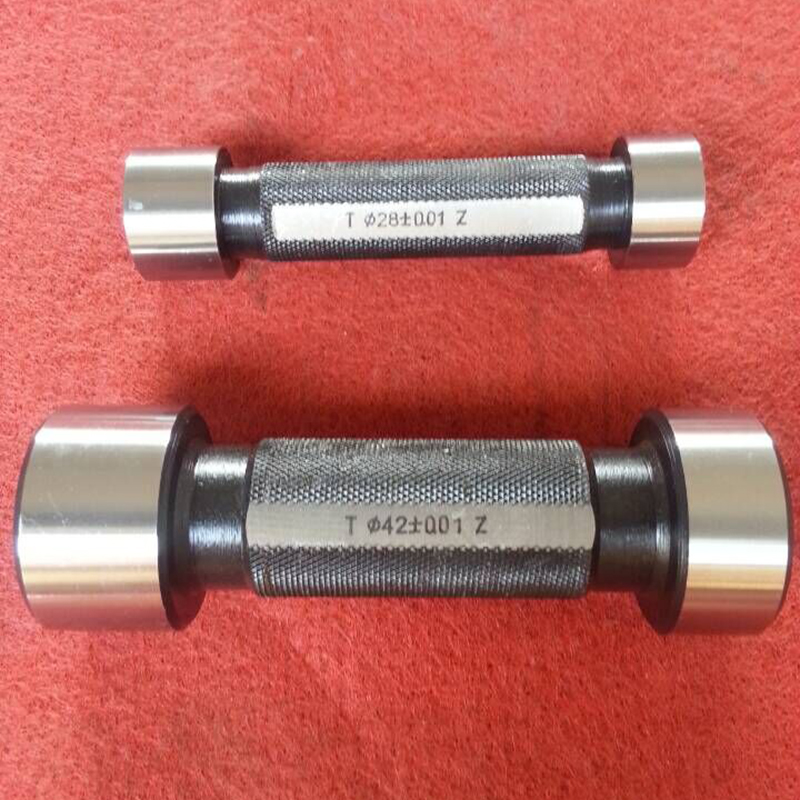Lap . 06, 2024 03:24 Back to list
Using Thread Ring Gauge for Precision Measurement and Quality Assurance in Manufacturing
The Importance of a Thread Ring Gauge in Quality Control
In the realm of engineering and manufacturing, precision is paramount. Every component must meet specific tolerances to ensure optimal performance and safety. One critical instrument that plays a vital role in maintaining thread standards is the thread ring gauge. This tool is indispensable for checking the dimensions and quality of threaded parts, particularly in industries that demand high standards such as aerospace, automotive, and machinery manufacturing.
What is a Thread Ring Gauge?
A thread ring gauge is a precision tool designed to check the external threads of cylindrical components. It is shaped like a ring, with an internal profile that replicates the desired thread form. The gauge is produced to stringent standards, ensuring it accurately represents the specifications required for the threads being tested. There are two primary types of thread ring gauges the Go gauge and the No Go gauge. The Go gauge must fit onto the thread to confirm that the dimensions are within acceptable limits, whereas the No Go gauge should not fit if the threads are correct.
Ensuring Quality Assurance
The primary purpose of a thread ring gauge is quality assurance. By using this gauge during the manufacturing process, companies can verify that their threaded components meet the specified tolerances and standards. This is crucial because incorrect thread dimensions can lead to assembly issues, component failures, or safety hazards. Regular checks with a thread ring gauge help to identify problems early in the production process, reducing waste and preventing costly rework.
Applications in Various Industries
In the aerospace industry, for instance, threaded components undergo extreme stress and environmental conditions. A small defect in thread dimensions can lead to catastrophic failures. Therefore, the use of thread ring gauges is mandated to ensure all parts meet rigorous safety and reliability standards. Similarly, in the automotive industry, where parts are produced in large volumes, maintaining thread integrity is vital for performance and safety. Here, thread ring gauges are employed not just at the end of the production line, but throughout various stages of manufacturing.
thread ring gauge is used for checking

In the machinery sector, where precision in threading can affect the overall functioning of machines and equipment, thread ring gauges are essential. They help in maintaining the compatibility of parts, particularly in complex assemblies where many components interact.
Benefits of Using Thread Ring Gauges
The use of thread ring gauges offers several benefits
1. Precision Checking These gauges provide an accurate means of measuring thread dimensions, ensuring that components will fit together properly. 2. Time Efficiency Implementing thread ring gauges in the production process can save time by quickly identifying non-conforming parts, allowing for immediate corrective actions.
3. Cost Reduction By minimizing the number of defective parts, companies can avoid costly rework and scrap, ultimately leading to lower production costs.
4. Enhanced Customer Satisfaction By ensuring all products meet the required specifications, companies can enhance customer trust and satisfaction, leading to repeat business and strong reputations.
Conclusion
In conclusion, the thread ring gauge is a vital tool in modern manufacturing, crucial for maintaining the quality and integrity of threaded components. As industries continue to evolve and demand higher precision and reliability, the importance of such gauges cannot be overstated. They not only help to prevent costly failures but also play a significant role in the ongoing quest for quality improvement within manufacturing processes. As quality assurance becomes an ever-increasing focus in engineering fields, the reliance on thread ring gauges is likely to grow, underscoring their essential role in ensuring that components function as intended in their respective applications. Thus, investing in high-quality thread ring gauges and implementing their routine use should be a priority for any organization that values quality, safety, and efficiency in production.
-
Precision Manufacturing with Advanced Spline Gauge DesignNewsJul.31,2025
-
Industrial-Grade Calibrated Pin Gauges for Exact MeasurementsNewsJul.31,2025
-
Industrial Filtration Systems Depend on Quality Filter DN50 SolutionsNewsJul.31,2025
-
High-Performance Gate Valve WholesaleNewsJul.31,2025
-
Granite Surface Plate The Ultimate Solution for Precision MeasurementNewsJul.31,2025
-
Granite Industrial Tools The Ultimate Guide for Bulk BuyersNewsJul.31,2025
Related PRODUCTS









